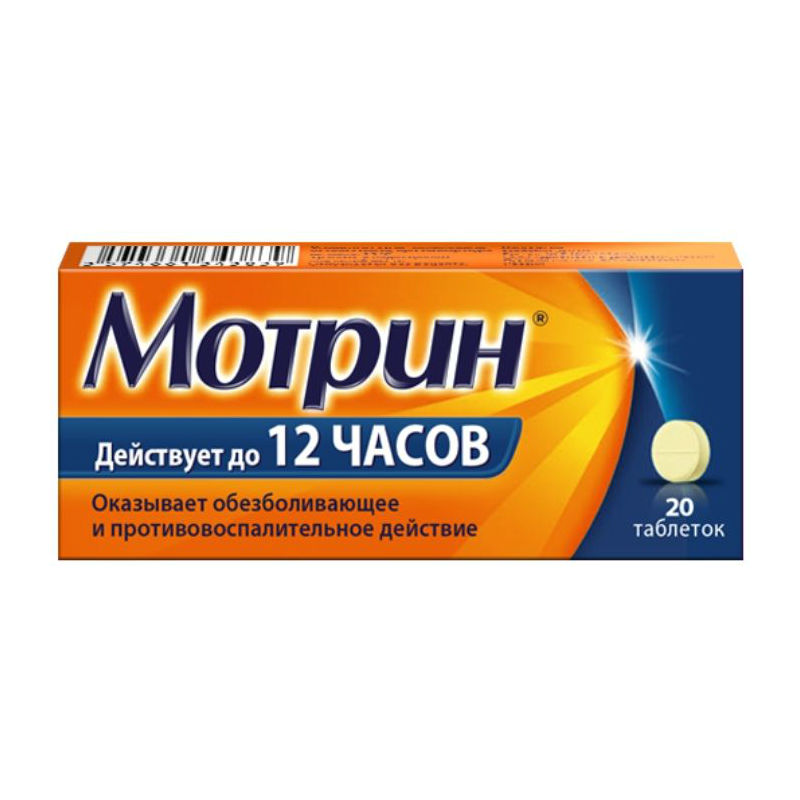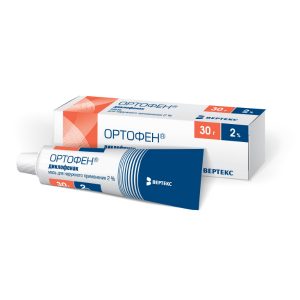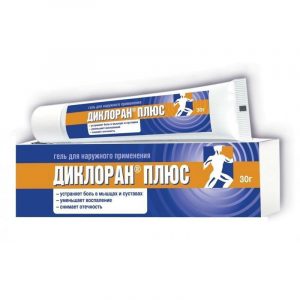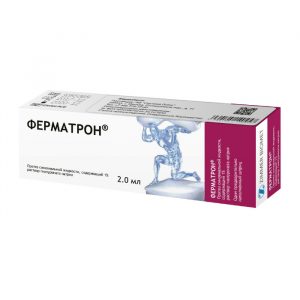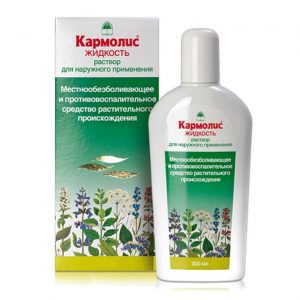Description
Pharmacological action of
NSAIDs.
It has anti-inflammatory, analgesic and antipyretic effects associated with non-selective suppression of the activity of COX-1 and COX-2, which regulate the synthesis of prostaglandins.
Indications
Mild to moderate pain syndrome: neuralgia, ossalgia, myalgia, lumbar ischialgia, post-traumatic pain syndrome (sprains and bruises), accompanied by inflammation, postoperative pain (in traumatology, orthopedics, gynecology, maxillofacial surgery), headache, migraine, algodismenorrhea, adnexitis, toothache.
Symptomatic pain therapy for diseases of the musculoskeletal system, including bursitis, tendovaginitis.
As part of the complex treatment of infectious and inflammatory diseases of the ear, throat, nose with severe pain (pharyngitis, tonsillitis, otitis media).
Fever with flu and colds.
The drug is used for symptomatic therapy (to reduce pain, inflammation and lower fever) and does not affect the progression of the underlying disease.
Contraindications
complete or incomplete combination of bronchial asthma, recurrent nasal polyposis and paranasal sinuses and intolerance to acetylsalicylic acid or other NSAIDs (including a history of)
period of aortic coronary artery disease and stenosis. (ulcerative colitis, Crohn s disease)
cerebrovascular bleeding or other bleeding and hemostatic disorders
severe renal failure (CC less than 30 ml / min), incl. confirmed hyperkalemia progressive kidney disease
inhibition of bone marrow hematopoiesis
pregnancy
lactation (breastfeeding)
children under 12 years of age
hypersensitivity to naproxen or naproxen sodium.
With caution, the drug should be prescribed for coronary heart disease, cerebrovascular disease, congestive heart failure, dyslipidemia / hyperlipidemia, diabetes mellitus, peripheral artery disease, CC – 30-60 ml / min, history of gastrointestinal ulcer development, presence of Helicobacter pylori infection, prolonged use of NSAIDs, severe somatic diseases, concomitant therapy with anticoagulants (e.g., warfarin), antiplatelet agents (acetylsalicylic acid, clopidogrel), GC for oral administration ( For example, prednisolone) selective serotonin reuptake inhibitors (citalopram, fluoxetine, paroxetine, sertraline), smoking, frequent drinking, elderly patients, in children and adolescents under 16 years of age.
To reduce the risk of adverse events from the gastrointestinal tract, the minimum effective dose should be used with the lowest possible course.
Special instructions
Do not exceed the doses indicated in the instructions.
To reduce the risk of gastrointestinal adverse events, the minimum effective dose should be used with the shortest possible course. If pain and fever persist or become stronger, the patient should consult a doctor.
Patients with bronchial asthma, bleeding disorders, as well as patients with hypersensitivity to other analgesics should consult a doctor before taking naproxen.
Caution is advised to administer the drug to patients with liver disease and renal failure. In patients with renal failure, QC must be monitored. In chronic alcoholic cirrhosis and other forms of liver cirrhosis, the concentration of unbound naproxen increases, therefore, lower doses are recommended for such patients.
Naproxen should not be taken with other anti-inflammatory and analgesic drugs, except for the prescription of a doctor.
Older patients are also recommended lower doses of the drug.
Naproxen should be avoided for 48 hours prior to surgery.
If it is necessary to determine 17-corticosteroids, the drug should be discontinued 48 hours before the study. Similarly, naproxen may affect the determination of 5-hydroxyindoleacetic acid in urine.
The use of naproxen, as well as other drugs that block the synthesis of prostaglandins, can affect fertility, therefore it is not recommended for women, planning a pregnancy.
Composition of
One tablet contains:
active substance:
naproxen in terms of 100% substance – 250.00 mg
excipients:
lactose monohydrate – 71.12 mg,
potato starch – 42.00 mg,
–
16.00 mg,
magnesium stearate – 0.76 mg,
dye tropeolin O – 0.12 mg.
Dosage and Administration
Inside, adults and children over 12 years of age. Tablets should be taken whole, washed down with a sufficient amount of liquid, can be taken with food.
For pain relief, the initial dose is 500 mg, then if necessary, 500 mg every 12 hours or 250 mg every 8 hours.
The usual daily dose used to relieve pain is 500 to 1000 mg.
A 500 mg dose twice a day is recommended to relieve pain from migraines. However, treatment should be discontinued if the frequency, intensity and duration of migraine attacks do not decrease within 4-6 weeks.
To relieve menstrual pain, pain after the introduction of the intrauterine device and other gynecological pains (adnexitis), the initial dose is 500 mg, then, if necessary, 250 mg every 6-8 hours for 3-4 days.
For the symptomatic treatment of pain in diseases of the musculoskeletal system (bursitis, tendovaginitis), the usual daily dose of the drug is 500-1000 mg, one or two tablets twice daily in the morning and evening.
When using the drug as an antipyretic, the initial dose is 500 mg, then, if necessary, 250 mg every 8 hours. The drug is not recommended for use as an anesthetic for more than 5 days without consulting a doctor. If symptoms persist, consult a doctor.
Side effects
Side effects most often develop when using the drug in high doses.
From the digestive system: constipation, abdominal pain, dyspepsia, nausea, diarrhea, ulcerative stomatitis, erosive and ulcerative lesions and bleeding of the gastrointestinal tract, NSAIDs-gastropathy (damage to the antrum in the form of erythema of the mucous membrane, hemorrhage, erosion and ulcers), increased activity of liver enzymes, impaired liver function, jaundice, bloody vomiting, melena.
From the side of the central nervous system: dizziness, headache, drowsiness, depression, sleep disturbances, inability to concentrate, insomnia, malaise, slowing of the speed of psychomotor reactions, aseptic meningitis, cognitive dysfunction.
On the part of the sensory organs: hearing loss, tinnitus, hearing impairment, visual impairment.
From the cardiovascular system: swelling of the face and limbs, shortness of breath, palpitations, occurrence or worsening of existing chronic heart failure, vasculitis.
From the respiratory system: eosinophilic pneumonitis.
From the urinary system: glomerulonephritis, hematuria, interstitial nephritis, nephrotic syndrome, renal failure, renal papillary necrosis
From the reproductive system: menstrual irregularities.
From the hemopoietic system: eosinophilia, granulocytopenia, leukopenia, thrombocytopenia, aplastic anemia, hemolytic anemia.
From the skin: itching, ecchymosis, excessive sweating, purpura, alopecia, photodermatosis.
Allergic reactions: skin rash, urticaria, angioedema, toxic epidermal necrolysis, erythema multiforme, Stevens-Johnson syndrome.
Other: thirst, hyperthermia, hyperglycemia, hypoglycemia, myalgia and muscle weakness.
Overdose
Significant overdose of the drug can be characterized by drowsiness, dyspeptic disorders (heartburn, nausea and vomiting, abdominal pain), weakness, tinnitus, irritability, in severe cases – bloody vomiting, melena, impaired consciousness, convulsions and convulsions.
Treatment: gastric lavage, activated charcoal and symptomatic therapy: antacids, H2-histamine receptor blockers, proton pump inhibitors. Hemodialysis is ineffective.
Storage conditions
In a dry, dark place at a temperature of no higher than 25 ° C.
Keep out of the reach of children.
Expiration
3 years.
Deystvuyuschee substances
Naproxen
Terms and conditions
without prescription
Formulation
tablets
Appointment
Adult, Children over 6 years
Indications
From arthrosis and arthritis, From osteoarthritis, Edema after injuries and surgeries, Flu, Colds, Migraines, Lumbago, From sciatica, From rheumatoid arthritis, From infectious diseases, From sore throats, From periarthritis, Neuralgia
